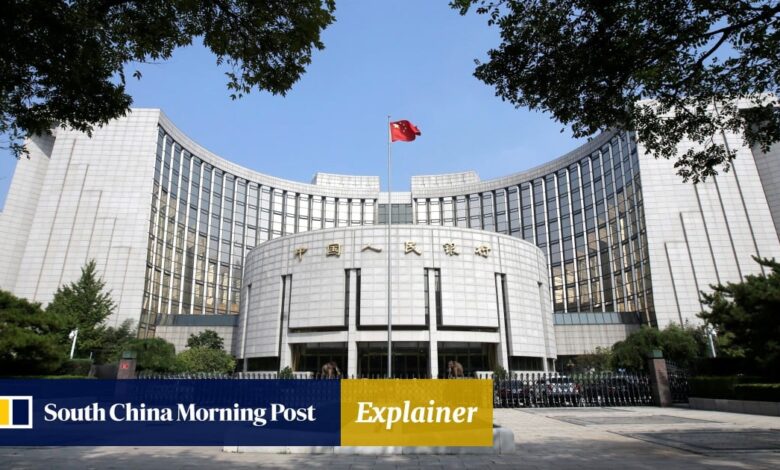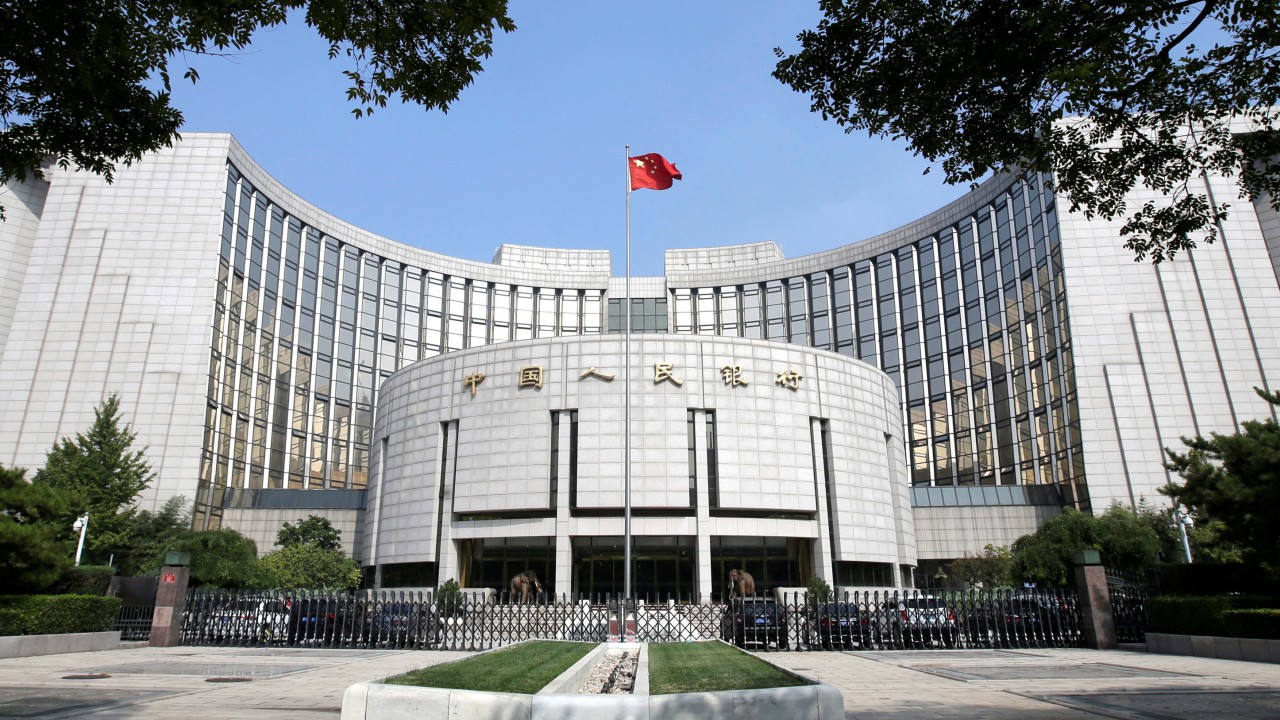Why China’s risky bond rally has put PBOC on the offensive to optimise yields


The rate continued to fall, dipping below 2.1 per cent this month before PBOC intervention sent it back up to 2.25 this week.
Why are Chinese investors snatching up sovereign bonds?
Government debt has become increasingly popular with Chinese investors on the back of the country’s sluggish economic recovery and amid market expectations of further interest rate cuts.
When economic growth remains slow, the general public has a strong preference for low-risk financial assets in their investment portfolio, with government bonds being typical examples, in contrast to parking money in places such as the sluggish stock market.
As strong demand for government bonds pushes up the prices, their yields decrease. A bond’s yield is the return an investor can expect to receive each year over its term to maturity.
[Financial institutions] are basically shorting the yuan and the Chinese economy
Why does PBOC want to see a stronger long-bond yield?
Beijing believes the current long-bond yield curve is not an accurate reflection of China’s economic outlook in the long term. The PBOC has said that it is determined to maintain a positive sloping yield curve for long bonds.
Regulators in China hope to prevent a situation where a low long-bond yield and pessimism about the future state of China’s economy – and in turn expectations for further interest rate cuts – would reinforce each other, resulting in a downward spiral.
The reasonable range for the 10-year government bond yield should be 2.5 to 3 per cent, according to a May report by the Financial News, a newspaper managed by the PBOC.
“From the perspective of stabilising the exchange rate and expectations, financial institutions snapping up government bonds means they expect the interest rates will get lower and lower in the future,” the report said.
“They are basically shorting the yuan and the Chinese economy, increasing the pressure of capital outflows.”
What did PBOC learn from the collapse of Silicon Valley Bank?
The regional US bank had piled money into US Treasuries before the Federal Reserve raised interest rates to quell the inflation spike following the Covid-19 pandemic stimulus. As a result, the value of the old bonds it held fell sharply as the current 10-year Treasury bond offered a much higher yield, which led to a bank run on its deposits and eventually its collapse in 2023.
In its latest monetary policy report, the PBOC said that “the return on some wealth-management products, particularly bond-based products, is significantly higher than the return on the underlying assets”.
This is mainly achieved through leverage, which exposes investors to the interest rate risk, it said.
“When market interest rates rise in the future, the net value retracement of related asset-management products would also be substantial,” the report added, referring to a temporary pullback in the price of such financial instruments.
What has the PBOC done to cool the long-bond rally?
The Chinese central bank has not shied away from warning about the risks of an overheated bond market while pushing back against the bond rally of late.
On July 1, the PBOC announced that it would borrow government bonds from some primary dealers so it could sell them in the open market when necessary.
And the fight has amped up in August as the PBOC reportedly increased secondary-market intervention, including guiding large state banks to sell sovereign bonds.
The moves helped push the 10-year government bond yield up to 2.25 on Monday after it had nearly touched 2 per cent, but that is still markedly down from the PBOC’s aforementioned reasonable range. The last time the yield exceeded 3 per cent – now considered the high end of that range – was October 2021.
Regulators have also significantly slowed down the approval process for new bond funds and asked some fund companies to document their existing bond-fund durations, while at least four Chinese brokerages have reduced or even cut transactions of sovereign debt, according to Bloomberg reports.
The PBOC may eventually need to lower interest rates further to support the economy and boost domestic inflation
What stands in the PBOC’s path to victory?
Big challenges remain, as weak credit demand, still-low inflation expectations, and depressed consumer and business confidence are not supportive of a sizeable rise of interest rates in China, said a note from Goldman Sachs on Saturday.
“The PBOC’s intervention does not change the supply-demand balance of the [Chinese government bond] market in the medium to long term,” it said. “We expect interest rates to trend lower in the medium term, as the PBOC may eventually need to lower interest rates further to support the economy and boost domestic inflation.”
The PBOC will be victorious in its efforts only when stronger domestic demand leads to reflation, said Larry Hu, chief China economist at Macquarie Capital.
Source link



